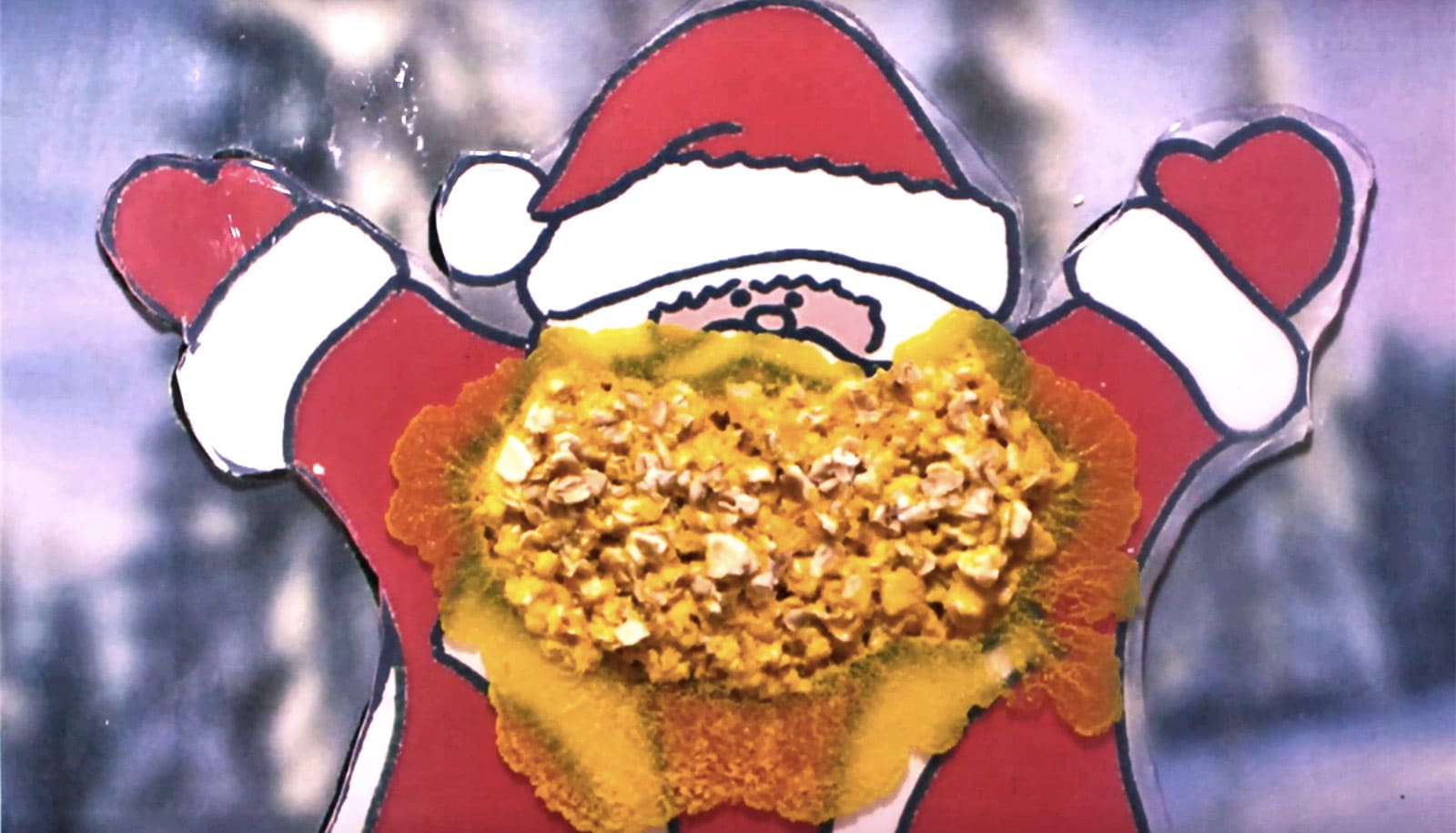This slime Santa beard is a myxomycete, a single giant cell with multiple nuclei that lives in dark damp places and likes to feed off bacteria and fungi and things that have started to decay.
“Slime molds are weird and wonderful in the world of science, there around a thousand species, some tiny and some a few meters across coming in all different colors from yellow to bright pink or red,” says Ian Hands-Portman from the School of Life Sciences at the University of Warwick.
“Having kept them for ten years you can learn so much about them, from what food they like, to the ability to grow them in all shapes and sizes you want—such as Santa’s slimy beard!”
In the video above, Santa’s slime beard grows over a two-day time lapse. The slime mold isn’t a plant, animal, or a fungi; it’s a myxomycete, coming from the Greek mxyo for slime and mycete for mold.
Even though each slime mold is a single cell, this type is called a “acellular slime mold”—a single cell containing millions of nuclei.
You’ll find slime molds in dark damp places, like woods or forests, by looking under logs, fallen leaves, and woodchip piles. In the woods, they feed off bacteria and fungi, but in the lab researchers feed them oats. They’ve also found that the the slime molds like really hot peppers, but not chocolate.
Slime molds are useful to scientists in many ways. For example, cancer researchers are interested in how they control how their nuclei all divide at the same time.
In 2000, a team of Japanese scientists discovered it could solve mazes, and since other scientists have shown they can learn to do simple math.
Computer scientists are interested this ability to solve mazes and maps. Although they’re slower than computers, they are much more efficient, which means they could lead to faster, lower energy computers and sat-navs.
Source: University of Warwick

